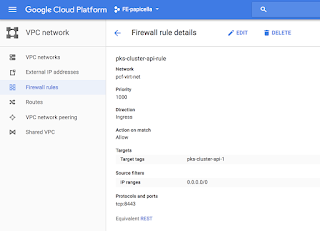1. Select an application to Autoscale and click on the "Autoscaling" radio option.
2. Select "Manage Autoscaling" link as shown below.
3. Set the maximum instance limit to "4" and click Save as shown below. You can also set minimum to 1 instance if you want to which will make it easier to verify the scaling of instances as one instance can easily be put under pressure.
4. Now lets set a "Scaling Rule" by clicking on the "Edit" link as shown below.
5. Now lets add a CPU rule by clicking on the "Add" link as shown below.
6. Now define a CPU rule as shown below and click on Save. Don't forget to make it active using the radio option. In this example we use very low threshold BUT it would be better to increase this to something more realistic like 30% and 60% respectively.
Now at this point we are ready to test the Autoscale service BUT to do that we are going to have to create some load. Many different ways to do that but "ab" on my Mac was the fastest way.
8. Create some load on an endpoint for your application to force CPU utilization to increase as shown below
pasapicella@pas-macbook:~$ ab -n 10000 -c 25 http://springboot-actuator-appsmanager-delightful-jaguar.cfapps.io/employees
This is ApacheBench, Version 2.3 <$Revision: 1807734 $>
Copyright 1996 Adam Twiss, Zeus Technology Ltd, http://www.zeustech.net/
Licensed to The Apache Software Foundation, http://www.apache.org/
Benchmarking springboot-actuator-appsmanager-delightful-jaguar.cfapps.io (be patient)
Completed 1000 requests
Completed 2000 requests
Completed 3000 requests
Completed 4000 requests
Completed 5000 requests
Completed 6000 requests
Completed 7000 requests
Completed 8000 requests
Completed 9000 requests
Completed 10000 requests
Finished 10000 requests
....
9. If you return to Apps Manager UI soon enough you will see that the Autoscale service has fired events to add more instances as per the screen shots below.
It's worth noting that the CF CLI Plugin for Autoscale can also show us what we have defined as as shown below. More information on this plugin is as follows
https://docs.run.pivotal.io/appsman-services/autoscaler/using-autoscaler-cli.html#install
View which applications are using the Autoscaler service:
pasapicella@pas-macbook:~$ cf autoscaling-apps
Presenting autoscaler apps in org apples-pivotal-org / space development as papicella@pivotal.io
OK
Name Guid Enabled Min Instances Max Instances
springboot-actuator-appsmanager 6c137fea-6a99-4069-8031-a2aa3978804c true 2 4
View events for an application that has Autoscaler service bound to it:
pasapicella@pas-macbook:~$ cf autoscaling-events springboot-actuator-appsmanager
Presenting autoscaler events for app springboot-actuator-appsmanager for org apples-pivotal-org / space development as papicella@pivotal.io
OK
Time Description
2018-04-20T09:56:30Z Scaled down from 3 to 2 instances. All metrics are currently below minimum thresholds.
2018-04-20T09:55:56Z Scaled down from 4 to 3 instances. All metrics are currently below minimum thresholds.
2018-04-20T09:54:46Z Can not scale up. At max limit of 4 instances. Current CPU of 20.75% is above upper threshold of 8.00%.
2018-04-20T09:54:11Z Can not scale up. At max limit of 4 instances. Current CPU of 30.53% is above upper threshold of 8.00%.
2018-04-20T09:53:36Z Can not scale up. At max limit of 4 instances. Current CPU of 32.14% is above upper threshold of 8.00%.
2018-04-20T09:53:02Z Can not scale up. At max limit of 4 instances. Current CPU of 31.51% is above upper threshold of 8.00%.
2018-04-20T09:52:27Z Scaled up from 3 to 4 instances. Current CPU of 19.59% is above upper threshold of 8.00%.
2018-04-20T09:51:51Z Scaled up from 2 to 3 instances. Current CPU of 8.99% is above upper threshold of 8.00%.
2018-04-20T09:13:24Z Scaling from 1 to 2 instances: app below minimum instance limit
2018-04-20T09:13:23Z Enabled autoscaling.
More Information
https://docs.run.pivotal.io/appsman-services/autoscaler/using-autoscaler-cli.html#install
https://docs.run.pivotal.io/appsman-services/autoscaler/using-autoscaler.html

















